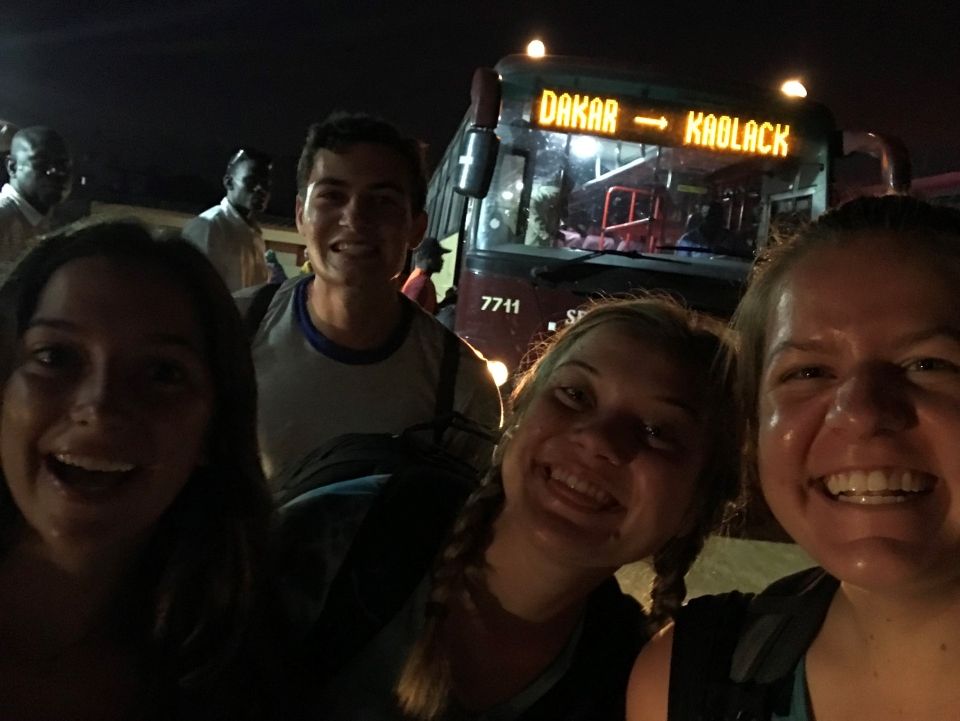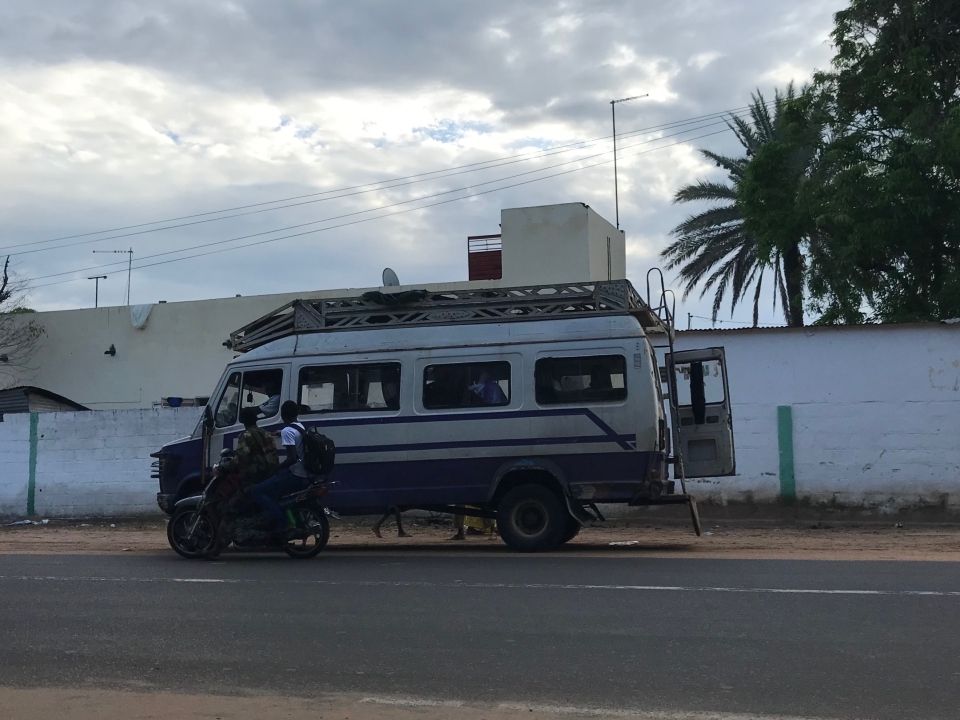Fall 2019 Rural visits - Insights from students part 1
Getting to Keur Saloum Diané by Morgan Pincombe
BEEP BEEP BEEP.
Jolted awake by my 5am alarm, I rubbed my bleary eyes, shoved the last items into my bag, and headed out to the sleepy streets of my neighborhood in Dakar. The quiet, peaceful streets were empty except for the one traveler who was buzzing with excitement to venture outside of Dakar and experience a rural Senegalese village…me! After hailing a taxi from the nearby main road, I arrived at the bus station where my travel group (pictured below) assembled.

Once the Dem Dikk rolled up to the station (fashionably late, as I am coming to expect here), we settled into our seats on the air-conditioned bus. Knowing full well that we were heading to hotter regions and leaving Dakar’s ocean breeze behind, we soaked in this luxurious cool air for the full four-hour ride. Multi-story buildings and heavy traffic quickly gave way to open fields, roaming livestock, and farmers tending to their crops. Whereas bus stops are clearly marked in Dakar, passengers began unloading on the side of the road where no roads, buildings, or people could be seen. The peaceful countryside intrigued me and blatantly contrasted with the bustle I have adapted to in Dakar.
The bus emerged from the windy roads and dropped us in Kaolack, the biggest city in the Kaolack region. Using our burner phones, we connected with our Peace Corps volunteers (PCVs) and caught a taxi to a local lunch spot. Over shawarma and ice cream, we got to know the PCVs and learned more about what to expect when we arrived in our respective villages. Then, it was time to split up. I said goodbye to the other CIEE students and headed out to the village of Keur Saloum Diané in the region of Fatick.
To get to Fatick, my Peace Corps volunteer and I embarked on a four-hour journey. We wove through the streets of Kaolack which were flanked by stands overflowing with fruit, vendors selling household products, and eager drivers trying to convince us to choose their vehicles. The PCV brought me through the crowds to “her guy” who brings her to and from her village. I quickly learned how crucial this arrangement was because her village is far off the main roads, making it difficult to access. The car was filled with goods to restock village corner stores and any passengers heading in the same direction. Once inside the “mini car” (pictured below), we sputtered along the Route National and bounced over dirt roads, stopping at several villages along the way to drop off passengers. These weathered cars lacked anything to cushion the jerks and bumps, so we felt every hole and every dirt mound we came across. To accommodate the most people, the drivers also packed the benches, which were built to suit six people, with at least 10 people making their way home. I was glad I had a window seat!

The ride gave me plenty of time to ask my PCV all about her role at the village health post, her relationships with the community, and her experience adapting to such a different culture. Finally, the mini car dropped us off right in front of her compound. Despite the rain, my PCV’s family ran out to the road to greet us and ushered us into the main living space. In a matter of minutes, I was introduced to dozens of family members and neighbors who smiled at me and made me feel welcome, despite my inability to comprehend much of the Wolof they spoke to me. As soon as we put our bags down, my PCV’s host family immediately set up chairs and set out the bowl, motioning for us to join them for dinner. Without knowing much about me at all, I was treated like a member of the family and fed a delicious meal of rice and fish with a surprising addition: macaroni noodles.
Shortly after, my PCV and I turned in for the night. I was struck by the comfortable home she had made for herself in her room. She painted her walls with a map of Senegal, surrounded her bed with pictures of her family and friends, and stored some of her favorite seasonings and snacks in trunks. Overall, her sense of adventure and desire to intimately experience Senegalese culture was evident from her proficiency in Wolof, her long conversations with her family and neighbors, and her devotion to community projects. And in the way that she brought along elements of her “normal” life in the United States, she set an example of how to ease the cultural transition and make herself at home in this new and fascinating place.
Related Posts
Fall 2019 Rural visits - Insights from students part 2
Development in Guènté Paté by Ian Collins As a Geography & Development student, I’ve always been taught there’s no one concise solution for the development issues faced by communities throughout... keep reading
FALL 2019: Dalleen akk jàmm
August 17th 2019. Dakar Fall semester students started landing in Diass Airport. Ahead, host families eager to meet their new daughters, sons or siblings. Once again, we get ready to... keep reading
Community Service: Bois d’Ecole project
The Ministry of Environment has initiated the Bois d’Ecole project in order to contribute to the improvement of the living environment and study of students and teachers and training of... keep reading